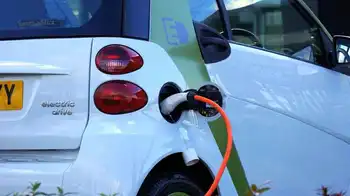Clean-air pact cost to TVA debated
For its part in settling a long-standing dispute over how the Clean Air Act applies to routine maintenance at its fossil plants, TVA agreed to retire 18 coal-fired units at three plants, invest $3 billion to $5 billion on new emission-control equipment and upgrades to its coal fleet, $350 million on clean energy projects, and pay a $10 million civil penalty. TVA also will pay the National Park Service and National Forest Service $1 million to rehabilitate forest and park lands affected by TVA emissions, including the Great Smoky Mountains National Park and Mammoth Cave National Park.
The agreement among TVA, EPA, Tennessee, Alabama, Georgia and North Carolina and environmental groups Sierra Club, National Parks Conservation Association and Our Children's Earth Foundation has received mixed reaction from Tennessee's congressional delegation.
Since the settlement was announced at a TVA board meeting in Chattanooga, Rep. John J. Duncan Jr. issued a statement assailing the agreement.
"I think this settlement is ridiculous," the Knoxville Republican said. "I think the EPA has gone power mad. I am disappointed that TVA caved in to these demands. This settlement will drive up utility bills for people in Tennessee and the surrounding states and hurt poor and lower income people the most. I assume this deal came about because the money is not coming out of the pockets of the elitists who reached it."
At a tour of the Watts Bar nuclear plant, U.S. Sen. Lamar Alexander said, "TVA made the only decision it could make. TVA doesn't have any business in the future operating coal plants without emission control equipment."
The health effects of air pollution are well-documented, and there are economic effects as well, Alexander said.
"Tourists don't come here to see the smog. They want to see the Smokies, and we want the Volkswagen suppliers to locate here and get clean air permits," he said. "When TVA embarks on a decision to say we are going to make sure all coal plants we operate are going to have pollution-control equipment and as much of our other energy as possible will be clean energy, that is a decision we ought to welcome in the Tennessee Valley."
U.S. Sen. Bob Corker, visiting the News Sentinel to discuss national debt reduction, said he was not familiar enough with details of the settlement to comment but noted there are a number of factors leading TVA toward less emission-producing energy sources. "Natural gas is highly competitive right now, causing them to look at different fuel sources from the coal they are now utilizing," he said.
Anda Ray, TVA senior vice president of environment and technology, said most of the stipulations in the settlement move TVA in the direction it was already planning to go.
"I think the important thing for the ratepayers to know is that the settlement does not increase rates any more than what would have happened without the settlement," she said.
For example, the $3 billion to $5 billion in emission control improvements and $350 million in clean energy projects were expenses that TVA had forecast and prepared for in its budget, she said.
Ray said TVA can absorb the loss of the retired coal-fired units, which it plans to replace with low-emission energy sources like renewable energy, natural gas, and nuclear power.
The retirement of coal units fits with recommendations of TVA's Integrated Resource Plan, which was approved at the April board meeting. The plan is meant to guide TVA energy resource policies for the next 20 years and calls for a shift from coal to more low-emission energy sources. It calls for idling 2,400 to 4,700 megawatts of coal-fired power capacity by 2017. Counting previously announced coal unit shutdowns plus those in the settlement, TVA will be retiring 2,700 megawatts out of the total 17,000-megawatt capacity of its coal fleet.
Also, the 2,700 megawatts is out of 37,000 megawatts for the whole TVA system, which includes three nuclear plants, two natural gas combined cycle power plants plus another under construction, nine combustion turbine plants, 11 fossil plants, 29 hydroelectric dams, two diesel generator plants, a pumped storage facility, a wind farm, a methane gas co-firing facility and several small solar facilities.
The settlement offers TVA an important advantage, Ray said. It absolves TVA from liability under New Source Review requirements for previous work at its fossil plants and provides legal clarity on how TVA operates its plants.
"This has provided us with some certainty moving forward," she said. "We can make the decisions now that are the most cost effective."
The settlement will simplify decisions on which units to idle or fit with emissions control equipment, allowing TVA more time to lessen the impact on employees and communities, she said.
The settlement entails TVA's retirement of two units at the John Sevier plant near Rogersville, Tenn., six at Widows Creek in North Alabama and all 10 units at the Johnsonville plant in Middle Tennessee. At Johnsonville, six of 10 coal units would be retired by 2015 and the rest by 2017. At John Sevier, two of its four units would be retired by 2012 and the other two either retired, converted to biomass or fitted with pollution control equipment by 2015. At Widows Creek, two of its eight units would be retired by 2013, two more by 2014 and the last two by 2015. The settlement mandates some combination of pollution control equipment, conversion to biomass or retiring of units at all other TVA fossil plants except Kingston, Cumberland and Bull Run, which already have pollution control equipment.
According to EPA, when fully implemented, the pollution controls and other required actions will address 92 percent of TVA's coal-fired power plant capacity, reducing emissions of nitrogen oxide by 69 percent and sulfur dioxide by 67 percent from its 2008 emissions levels.
Related News

EPA, New Taipei spar over power plant
TAIPEI - The controversy over the Shenao Power Plant heated up yesterday as Environmental Protection Administration (EPA) and New Taipei City Government officials quibbled over the project’s potential impact on a fisheries conservation area and other issues.
State-run Taiwan Power Co (Taipower) wants to build a coal-fired plant on the site of the old Shenao plant, which was near Rueifang District’s (瑞芳) Shenao Harbor.
The company’s original plan to build a new plant on the site passed an environmental impact assessment (EIA) in 2006, and the EPA on March 14 approved the firm’s environmental impact difference analysis report covering proposed changes to…





